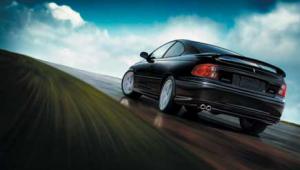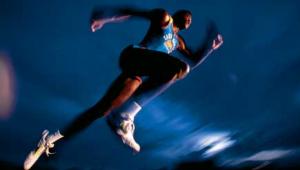Action Photography Page 3
| Practice Makes Perfect Go to the local park and photograph kids playing and dogs frolicking. Go to an amusement park and try different shutter speeds on the rides. Go out and photograph the action subjects you want to photograph (your kids' sports activities, or whatever you like—one of our editors finds birds in flight a fun and rewarding challenge when he doesn't have a specific assignment to photograph. Practice, and practice some more. It will seem difficult at first, but after a while the mechanical and technical aspects of shooting action will become second nature, and you'll be able to concentrate on composition, emotional moments and all the other things that make for good pictures, action or otherwise. And soon you'll have some exciting pictures to show for your efforts. To save some money, when you first start practicing the techniques presented here—panning the camera, shooting at the peak of the action, focusing and the like—don't put film in the camera. That way you won't waste a lot of film while you get the hang of doing these things and begin to develop a sense of timing (which is the key to any good action picture). Practice focusing (both in AF mode and manually, if your camera permits it) and following the action with the camera. Practice tracking your child or pet around the yard, trying the snap the shutter at just the right moments. Practice panning the camera by tracking cars driving by on a busy street (from the safety of the sidewalk—not from the middle of the street!). When you start to feel comfortable doing these things, put some film in the camera and start taking pictures of these same subjects. When you see your pictures, you'll be able to check on your progress and see which techniques you've got down pretty well and which ones still need some work. And, remember that there's more to sports than just action. The emotion, the pre-competition psyching-up, the victorious celebration, the agony of defeat—these make for great sports shots, too. Be sure to look for them, and be ready to capture them with your camera. At big-time pro events, you might not be able to get to the ideal spots to shoot such moments, but you certainly can at sandlot games and events at local parks. And while kids and amateur athletes might not carry the fame of the pros, they're just as delighted in victory, and just as downcast in defeat—and they'll provide opportunities for shots just as dramatic as any made of the pros before and after the big game. Equipment Most serious action shooters these days use higher-end AF 35mm or digital SLR cameras (the 6x4.5cm medium-format SLRs are gaining fans, too) and superfast supertelephoto lenses (300mm f/2.8, 400mm f/2.8 and 600mm f/4 are the most popular). These are expensive—the camera bodies cost well over $1000, and the superfast superteles start at more than $2000; a top camera with a 600mm f/4 lens can run more than $10,000! The pros can justify this expense, because they need to produce the highest-quality images to sell in their highly competitive market. Fortunately, you don't need such costly gear. We've had very good results (and know some budget-minded working pros who make their living) using mid-range AF 35mm SLRs and more-affordable slower telephoto lenses. Your skill at action-shooting is more important than the camera you use—a skilled action shooter using an entry-level 35mm SLR will bring back far better pictures than an unskilled shooter using the most-expensive equipment on the market. Serious action shooters prefer SLRs for several reasons. First off, eye-level through-the-lens viewing makes it easier to track the action. Next, the interchangeable lenses allow them to frame shots ideally from the sidelines. The fast shutter speeds let them freeze the action. The excellent metering and AF systems quickly and accurately handle the technical stuff so they can concentrate on the action itself instead of on the mechanics of shooting. Built-in motor drives make it easy to shoot great action sequences. And these cameras also give the photographers full manual control of everything when they want it. Can you shoot action with a point-and-shoot camera? Of course. But do serious action shooters use point-and-shoot cameras? No. Serious action shooters need longer and faster lenses, faster shutter speeds, more accurate predictive autofocusing systems, the ability to focus manually when desired, the ability to see whether or not the camera has focused accurately in AF mode, the ability to set a specific shutter speed when desired, and to know what shutter speed the camera has set in auto mode. So serious action shooters use "serious" SLR cameras. What about automation? Serious shooters are slow to accept new technology. They have to be convinced that it's better than what they've grown used to. Today's better AF 35mm SLRs offer excellent autoexposure and autofocus systems—so good that most pros have come to love the speed and convenience of automode shooting. Shutter-priority AE lets them select the shutter speed they wish to use, while the camera automatically and instantly sets the corresponding aperture for proper exposure. Continuous predictive AF tracks moving subjects very accurately. It's a lot easier to get sharp, properly exposed action shots today than ever before. But you still have to practice to perfect the techniques Of course, today's AF 35mm SLRs (except one entry-level model) let you set focus and exposure manually, too. So even old die-hards can enjoy the speed and convenience of automation without giving up total control whenever they want it. |
- Log in or register to post comments














































